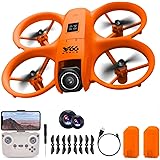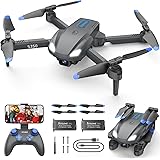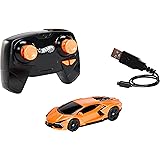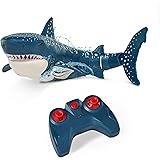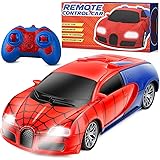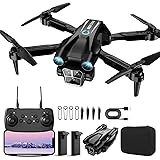Mastering Your E88 Camera Drone: A Comprehensive Guide to Flight
As you may have observed in the accompanying video, the E88 camera drone demonstrates fundamental flight characteristics, embodying the essence of beginner-friendly aerial exploration. This particular drone model has gained significant popularity as an accessible entry point into the world of quadcopters, appealing to aspiring pilots and hobbyists alike. Its straightforward design and intuitive controls establish it as an ideal platform for those embarking on their first drone flying adventures.
Successfully piloting an E88 camera drone, however, involves more than merely observing it in action; it requires a foundational understanding of its mechanics, operational procedures, and safety protocols. This guide aims to provide a robust framework, expanding upon the visual cues of basic flight to ensure new owners can confidently and responsibly operate their E88 drone. Proper instruction and diligent practice are paramount for developing the necessary skills to navigate the skies with ease.
Understanding the E88 Drone: Design and Features
The E88 quadcopter is specifically engineered with the novice pilot in mind, integrating features that simplify the learning curve. This **E88 camera drone** typically boasts a lightweight, foldable design, which contributes significantly to its portability and ease of storage. Furthermore, its durable plastic construction is often capable of withstanding minor impacts, a common occurrence during initial learning phases.
Key components include four powerful motors, each driving a propeller, which collectively generate the lift and directional control required for flight. An integrated camera, though often basic, enables nascent aerial photography and videography, adding another dimension to the flying experience. The remote controller, or transmitter, is ergonomically designed to fit comfortably in the hands, featuring clearly labeled joysticks and buttons for precise command execution. Grasping the functions of these fundamental elements is crucial before attempting any flight.
Essential Pre-Flight Preparations for Your E88 Quadcopter
Prior to initiating any flight, thorough preparation is indispensable for ensuring both safety and optimal performance of your **E88 drone**. Neglecting these preliminary steps can lead to erratic flight behavior, potential damage to the drone, or even accidents. Therefore, a systematic approach to pre-flight checks is strongly recommended for all pilots.
First and foremost, it is imperative to ensure that both the drone’s battery and the remote controller’s batteries are fully charged. A depleted battery mid-flight can result in an uncontrolled landing, which poses a risk to the drone and its surroundings. Subsequently, the propellers should be inspected for any damage, such as cracks or chips, which can severely impact flight stability and efficiency. Proper installation of propeller guards, if available, is also advisable to minimize damage from collisions and enhance safety, particularly for indoor flying or when operating near obstacles.
Upon powering on the drone and the remote control, the devices must be properly paired and calibrated. Calibration typically involves specific stick movements on the remote, allowing the drone’s gyroscopes and accelerometers to orient themselves accurately. This process is vital for stable flight and preventing unwanted drift. Furthermore, selecting an appropriate flying environment, free from obstacles, strong winds, and other people or animals, is a critical safety consideration that must not be overlooked.
Mastering the Controls: Flying Your E88 Camera Drone
The core of successfully **flying the E88** lies in understanding and skillfully manipulating its remote control. The standard two-stick remote controller configuration is a widely adopted standard in the drone industry, providing intuitive access to the drone’s primary flight axes. Developing muscle memory for these controls will significantly enhance your piloting capabilities.
The left joystick typically governs altitude (throttle) and yaw (rotation). Pushing this stick forward increases the throttle, causing the drone to ascend, while pulling it back decreases throttle, leading to descent. Moving the left stick left or right will rotate the drone around its vertical axis, allowing it to turn left or right without changing its forward direction. Conversely, the right joystick controls the drone’s pitch (forward/backward movement) and roll (sideways movement). Pushing this stick forward causes the drone to move forward, pulling it back causes it to move backward, and moving it left or right makes the drone strafe left or right, respectively. Consistent practice with each of these fundamental movements is essential for gaining proficiency.
Many **E88 drones** also feature “trim adjustments,” which are small buttons or toggles on the remote control designed to correct minor drifts during flight. If your drone consistently drifts in one direction when the joysticks are centered, applying the appropriate trim adjustment can stabilize its hover. Familiarization with these nuanced controls transforms a shaky flight into a smooth, controlled experience, paving the way for more confident aerial maneuvers.
Advanced Features and Safe Drone Operation
Beyond basic flight, the E88 often incorporates features designed to further assist beginner pilots and enhance the user experience. One such feature is “Headless Mode,” which simplifies directional control. When activated, the drone’s orientation relative to the pilot no longer matters; pushing the right joystick forward will always make the drone fly away from the pilot, regardless of which way the drone’s “front” is facing. This can significantly reduce confusion for new users as they learn to **fly the E88 camera drone**.
Another common feature is “One-Key Take-off/Landing,” which automates the initial ascent and final descent with the press of a single button. While convenient, pilots should still remain prepared to manually intervene if necessary. Furthermore, understanding the drone’s operational range and battery life is crucial. Always maintain a visual line of sight with your E88 drone and be mindful of its battery status to ensure a safe return, preventing unexpected crashes due to loss of power or signal. Adhering to local drone regulations, which often include restrictions on flight height and proximity to airports or restricted airspaces, is a fundamental aspect of responsible piloting.
Troubleshooting Common E88 Drone Issues
Even with careful preparation and practice, new pilots may encounter some common operational issues with their **E88 drone**. Addressing these problems effectively requires a systematic approach to diagnosis and resolution. For instance, if the drone drifts excessively despite trim adjustments, a thorough re-calibration of the gyroscopes and accelerometers is often the first step. Ensuring the drone is placed on a perfectly level surface during calibration is critical for accuracy.
Should the drone become unresponsive to controls, the primary culprits are usually battery levels (both drone and remote) or a lost connection. Re-pairing the remote with the drone, or simply power cycling both devices, can frequently resolve connectivity issues. Moreover, damaged propellers are a very common cause of unstable flight or reduced lift. Regular inspection and prompt replacement of any visibly damaged propellers are essential for maintaining stable flight dynamics. Keeping spare propellers on hand is therefore a sensible practice for any drone owner.
Maintaining Your E88 for Longevity and Performance
Proper maintenance is pivotal for extending the lifespan and ensuring consistent performance of your **E88 quadcopter**. Neglecting routine care can lead to premature wear and tear, ultimately impacting the drone’s ability to fly correctly. A proactive approach to maintenance will save both time and potential repair costs in the long run.
Regularly cleaning the drone, particularly its motors and propellers, helps prevent debris like dust, grass, or hair from hindering their operation. Gently wiping down the drone with a soft, dry cloth after each flight can prevent build-up. Furthermore, proper battery care is paramount. Always store batteries at a partial charge (around 50-60%) if they will not be used for an extended period, and avoid overcharging or fully discharging them frequently. These practices contribute significantly to the overall health and operational efficiency of your E88 camera drone.


